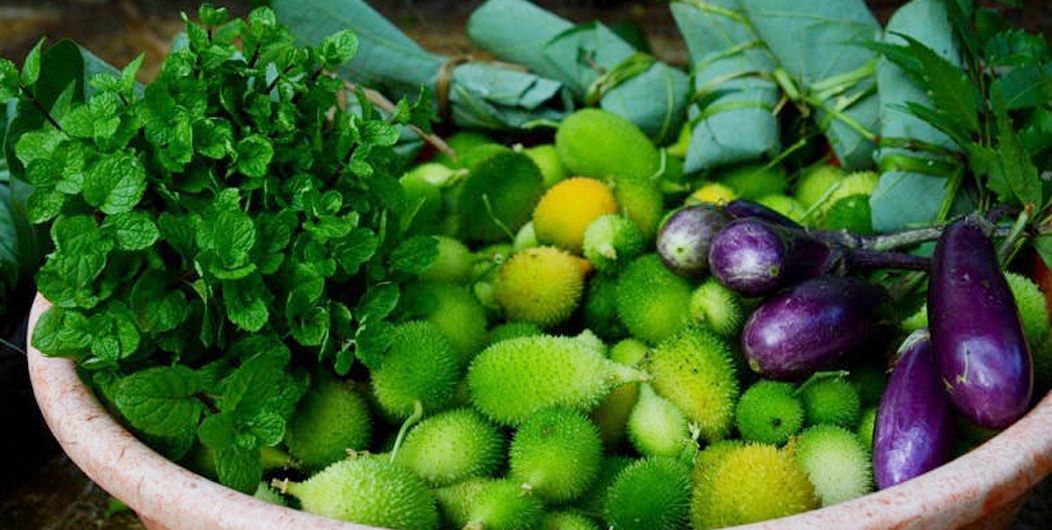
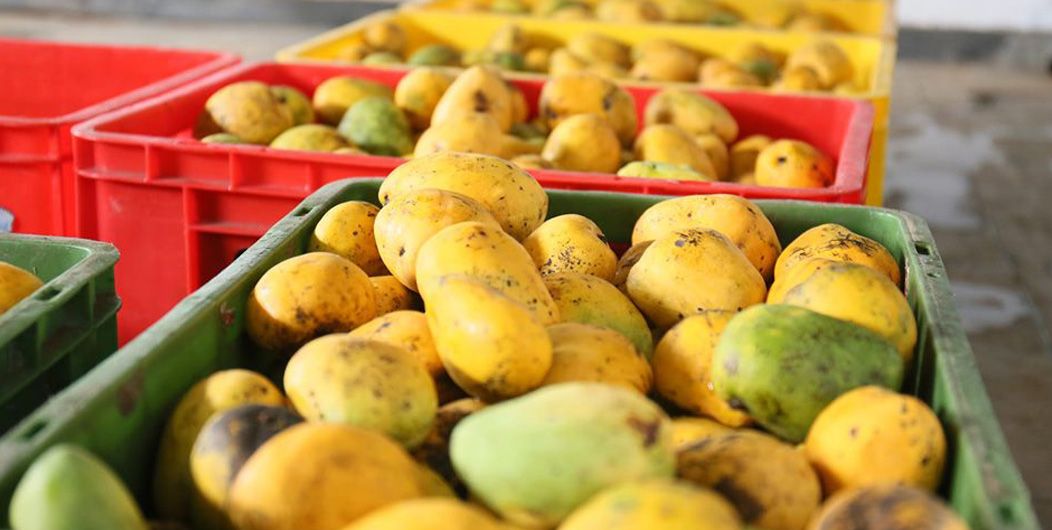
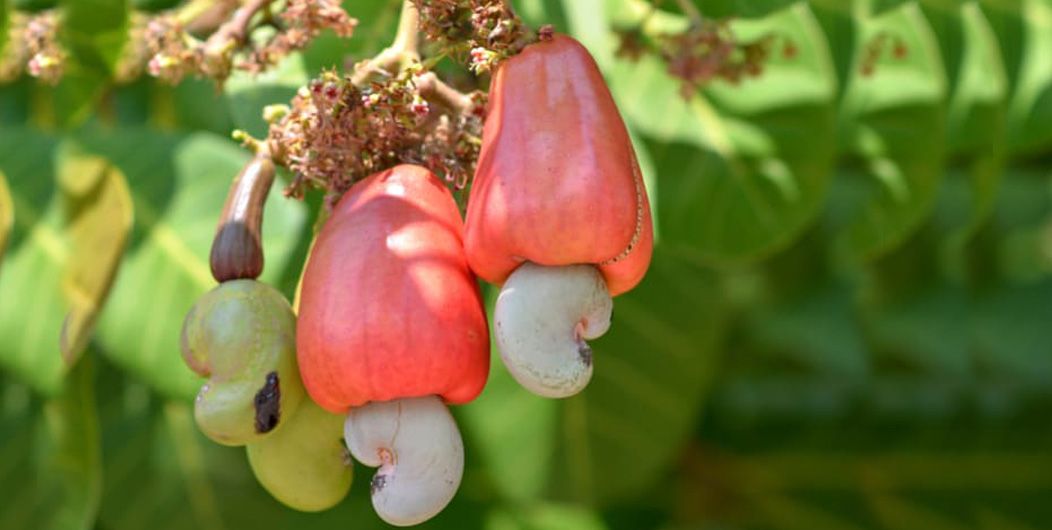
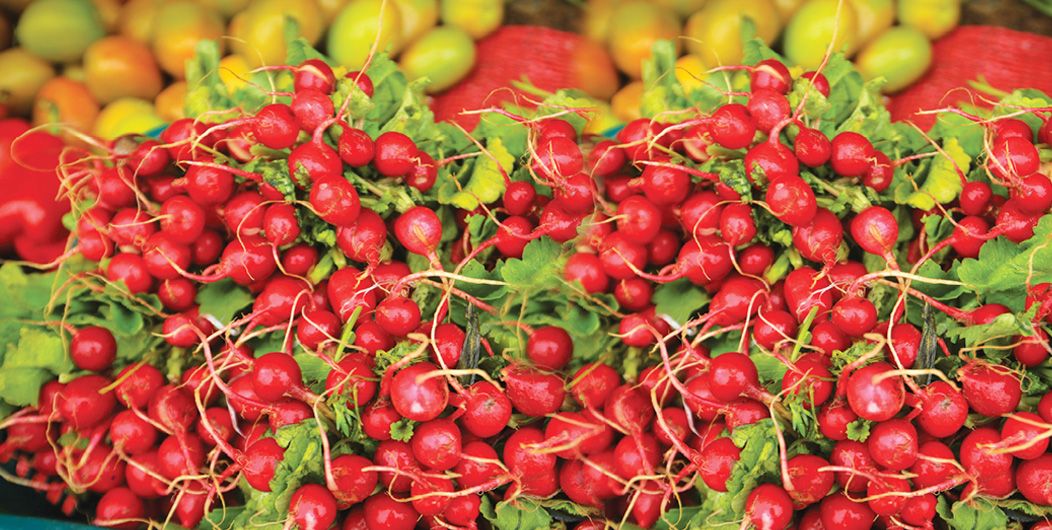
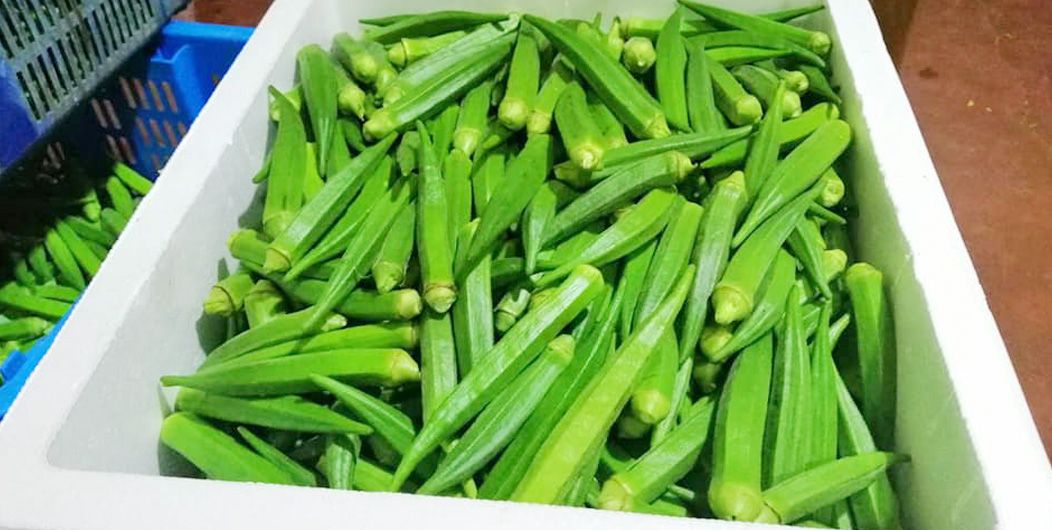
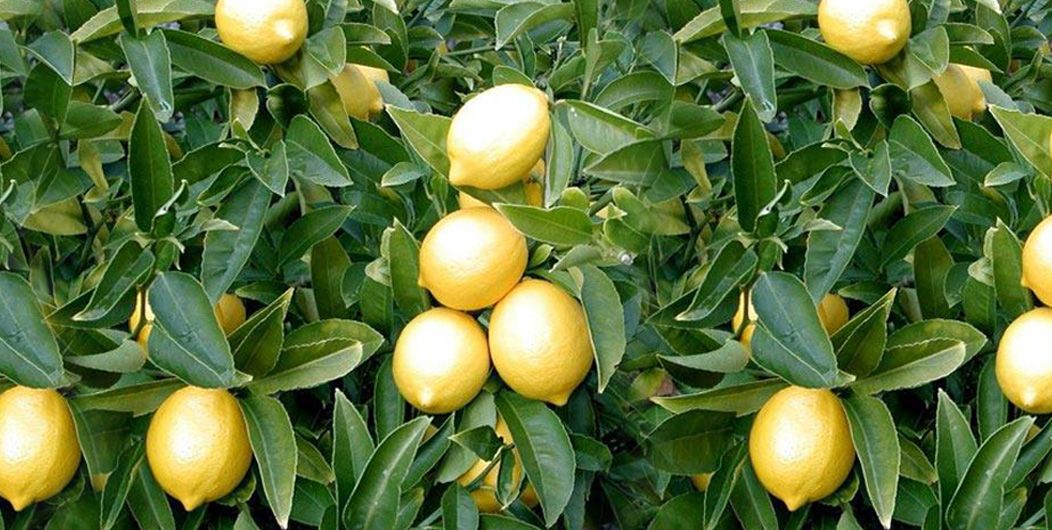
| Vegetables | Yams | Fruits | Nuts |
From time immemorial, Sri Lanka has been an agrarian nation thanks largely to the tropical climes, fertile soil, sprawling stretches of arable land, and a highly developed irrigation system that consists of both natural inland waters and man-made reservoirs and tanks. The conventional agrarian wisdom handed down the generations, agricultural best practices honed for centuries and the tremendous government support further strengthen this agrarian society.
The local lifestyle is very much close to the paddy fields and chennas scattered around the country and rice is a staple diet for the majority of Sri Lankans. It’s typically accompanied by some vegetable dishes, traditionally cultivated in chennas and now commercially grown on large-scale farms. Sri Lankans have been cultivating vegetables, fruit, and nuts both for subsistence and for commercial purposes, that is, for both domestic consumption and being exported. Around eighty different varieties of fruit and vegetables are grown by autonomous clusters of farmers in Sri Lanka's varied agro-climatic regions. Their collective produce exceeds 900,000 metric tonnes of fruit and vegetable per annum and they export both fresh and processed varieties to many destinations in the world.
Sri Lanka grows manifold vegetable varieties for domestic consumption and export purposes. Locally, vegetables are of central importance in the agriculture industry as they become a vital side dish to rice-based diets- the staple in Sri Lanka. Sri Lanka carries out advanced and path-breaking research regarding vegetable crops and the main institution responsible for vegetable crops research is the Research Division of the Department of Agriculture, Sri Lanka (DOA). Leading universities, particularly their Agriculture faculties and private sector organisations also contribute to vegetable crops research in Sri Lanka.
Benefitted by diverse agro-climate conditions of various regions, Sri Lanka grows numerous varieties of vegetable crops (around 40 species) in different parts of the country throughout the year. Several vegetable-based cropping systems can be found locally; in ancient Sri Lanka, vegetables were produced in mixed cropping systems, mainly home gardens, ‘Koratuwa’ gardens and in chenna cultivations where crops were produced for direct use or exchange purposes. However, as livelihoods diversified during the colonial era, these traditional systems were taken over by market-oriented production systems that have been rapidly expanding during the past 100 years (1). Consequently, traditional cropping systems are now rarely spotted in Sri Lanka and the majority of the vegetable production comes from commercial cultivations.
Today, with the worldwide consumer base growing more conscious of the health-related consequences of what they consume, Sri Lanka too has turned towards organic farming to supply healthy and chemical-free vegetable crops to the global market. The organic movement in Sri Lanka commenced in the 1980s through local NGOs with the Philippine Organic Agriculture Movement (1). Since then, organic agriculture in Sri Lanka has boomed with local farmers taking on organic farming to address the increasing global demand for organically produced crops. Now, Sri Lanka exports a variety of organic fresh produce to major global markets.
In 2018, Sri Lanka produced 705,000 Metric Tonnes of vegetables and the extent of cultivation was 61,000 ha (2). In general, vegetables produced in Sri Lanka fall into the following categories:
Rooty & Tuberous Vegetables
Not all these vegetables are exported, though; also, some of these are exported more than others. This depends on the volume of production and seasonal variations that affect nearly all crops. Growing vegetarianism too is a significant demand-driver here. The various health benefits of certain vegetables also make them a favourable choice in the consumers’ eyes.
Sri Lanka is blessed with multiple yams varieties that are grown in almost all the tropical parts of the country. Though mostly underutilised and lesser-known to consumers outside of Sri Lanka, these crops are relatively easier to grow and are highly tolerant to harsh climate conditions (3). As they can withstand less favourable climate and soil conditions, they require less agricultural input, which in turn means less agricultural expenses. Consequently, there is growing interest in popularising traditional yam varieties and expanding large-scale yam cultivation in Sri Lanka.
Root and tuber varieties from Sri Lanka have significantly higher nutritional values and some are even considered to be superfoods. Currently, there are more than 55 identified traditional/ indigenous root and tuber crops that grow in Sri Lanka (4). Some of the most widely known and consumed varieties include
In terms of the composition of yams, they are made of starch, proteins, lipids, vitamins and minerals, thus containing the nutrients that are pivotal to the proper functioning of the human body. For instance, research has found significant levels of vitamin A in Katuala, vitamin K1 in Rajala and Angiliala, vitamin B1 and B2 in all four of Kukulala, Katuala, Rajala and Angiliala (5). Further studies show that many root and tuber varieties from Sri Lanka contain high levels of minerals such as iron, zinc, magnesium, potassium, calcium etc that boost the immunity system, reduce the risk of anaemia, and protect the human body against hypertension, stroke, cardiac dysfunctions etc (4).
These yam varieties can be prepared and consumed in several ways. For instance, they can be cooked as a vegetable in coconut sauce, boiled and consumed with accompaniments, fried as chips or tempered as an accompaniment to rice. Whichever way it is prepared, they offer you a distinct taste of the tropics coupled with incomparable nutritional value.
Sri Lanka’s export fruit basket is full of exotic and succulent fruits of some appetising colours and they promise tantalising flavours plus tremendous health benefits owing to the nutritional content they carry. Sri Lanka produces both common fruits and exotic fruits.
Common Fruits Found in Sri Lanka
The major fruit varieties grown in Sri Lanka are mango, papaya, pineapple, avocado, banana, watermelon, rambutan, mangosteen, wood apple, guava, pomegranate and jackfruits. Banana, pineapple and papaya are commercially grown whereas other varieties of fruit come from home gardens for the most part. The extent of fruit crops at present is about 69,800 ha and it yields an average annual production of about 590,000 metric tonnes. Out of that, about 50-55% is locally consumed, 30- 40% is wasted and about 11% is exported, according to 2018 data (2). Fruits produced in Sri Lanka are mainly exported to the United Arab Emirates, India and the Maldives.
Fruits are grown all around the island of Sri Lanka, from the coastal belt lining the country to higher elevations in the hill country (6). The variety of fruits grown in each region varies significantly, depending on the climate and soil conditions required for each fruit variety. For instance, some varieties thrive in the cooler climes in the central highlands and the surrounding regions whose climate is akin to that of the central highlands while some other varieties thrive in the drier climes. Even though certain fruit varieties can be cultivated in any climes, the optimal yield can only be expected in the agro-climatic zone where it’s supposed to be cultivated. Also, the majority of fruits in Sri Lanka are cultivated under rain-fed conditions.
Cashew nut, aka the ‘wonder nut’, is a valuable cash crop that doubles as a fruit and a vegetable. On the one hand, it is used as a fruit that goes into numerous delicacies such as puddings, cakes, and ice cream. On the other hand, it is prepared as a curry and also consumed as a snack.
Currently, Sri Lanka produces cashew-related value-added items ranging from raw, roasted, spiced and fried kernels and they are full of natural goodness and essential nutrients. For example, 100 grams of cashew contains 21% protein, 5% iron and 0.45% phosphorus. Cashew kernel contains 47% fat and 82% of this fat is an unsaturated fatty acid that lowers the blood cholesterol level. In addition, cashew nuts also contain vitamins A, D and E.
Sri Lanka produces cashew for both domestic consumption and export purposes. More than half of the cashew extent is found in the dry zone of the country and it is estimated that, out of 77,809 cashew growing allotments, 61, 496 or 79% is cultivated in home gardens. The main areas of cashew cultivation are Puttalam, Kurunegala, Batticaloa, Anuradhapura, Mannar and Hambantota. In 2012, the domestic production of cashew grew by 67% and accounted for 2,000 Metric Tonnes. Due to increased domestic demand, exports declined by 53% and came down to 145.8 Metric Tonnes. However, as the 30-year-old internal conflict came to an end, the cashew production bolstered and the extent of cultivation has been increasing significantly ever since (7).
The fruit, nuts and vegetables produced in Sri Lanka have caught the world’s attention for their unique flavours, rich nutritional content, and countless health benefits. Source fruit, nuts, and vegetables from Sri Lanka - one of the most trusted destinations and indulge in the exotic flavours and the natural goodness of the tropics that they come with.
Due to the country’s diverse climatic regions, Sri Lanka produces a wide variety of fruits, nuts, and vegetables. The manufacturing and exporting of more than 9000 tonnes of produce annually solidify Sri Lanka as a major exporter of fruits, nuts, and vegetables.